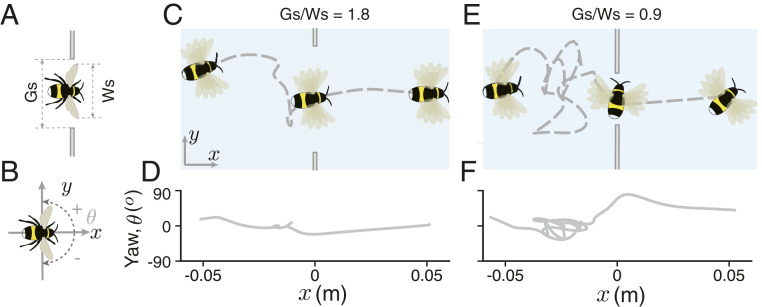Fig. 1.
Bumblebees can safely fly through gaps that are smaller than their wingspan. (A and B) Illustrations indicating the wingspan of bees (Ws), the size of the gap (Gs), and the positive and negative yaw (heading) angles for bees flying in the tunnel, respectively. (C) Schematic illustration of the flight of a bee flying through a gap that is much wider than its wingspan. (D) The instantaneous yaw angle of bee shown in C. (E) Schematic illustrationof the flightofabeeflying through a gap that is smaller than its wingspan. (F) The instantaneous yaw angle of bee shown in E. Flights, in both cases (C and E), consisted of approach, lateral peering, and—for the smaller gap size (E)—body reorientation (an increase in yaw angle) while passing through the gap. The differences in reorientation behavior can be noted at x = 0 (location of the gap), whereas in F the bee displays a large increase in yaw angle that reorients its body to pass through the small gap, and body reorientation in D is minimal. For the flight shown in C and D, Ws = 27.5 mm and Gs = 50 mm, while for the flight shown in E and F, Ws = 27 mm and Gs = 25 mm.

